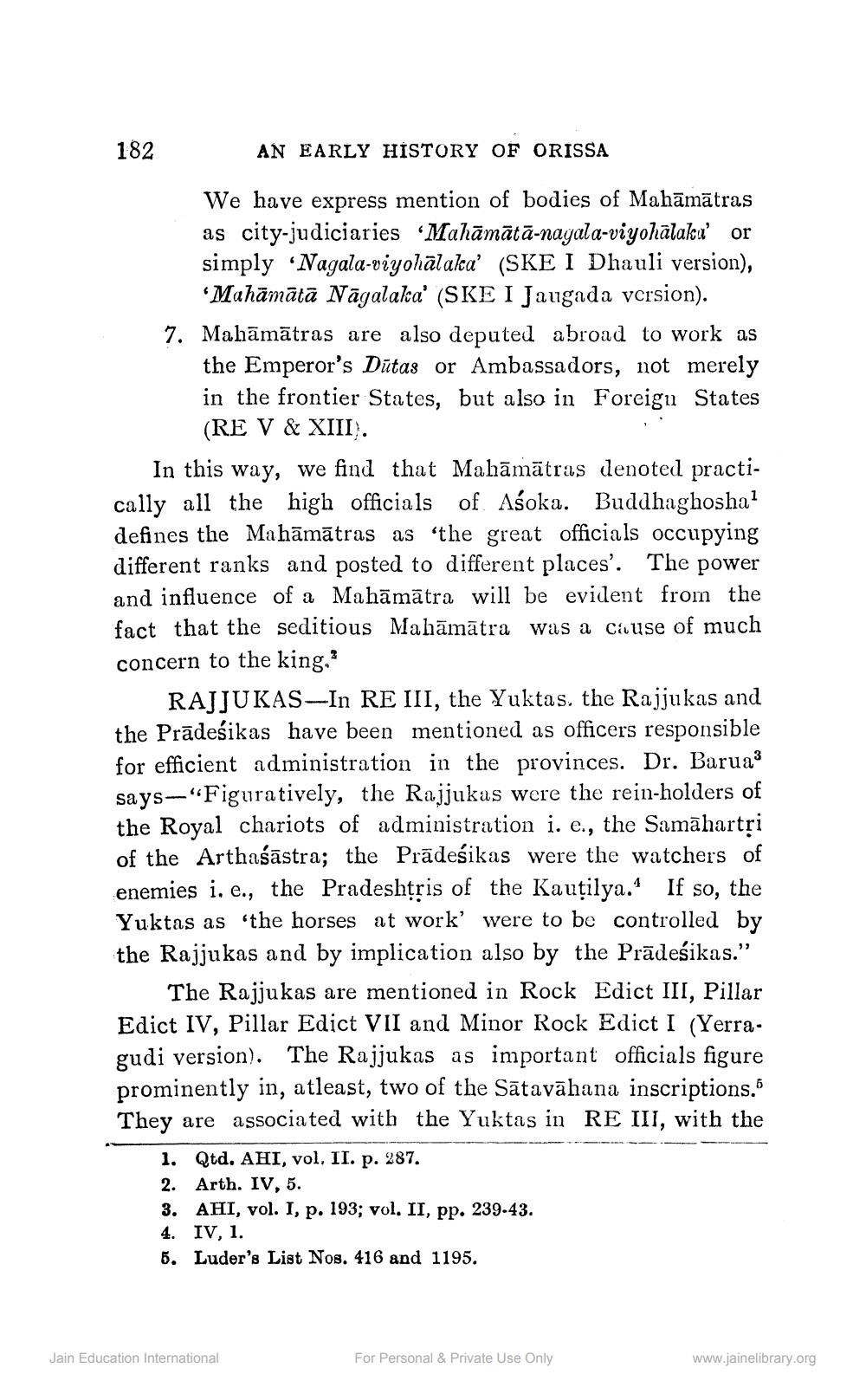________________
182
AN EARLY HISTORY OF ORISSA
We have express mention of bodies of Mahāmātras as city-judiciaries ‘Mahāmātā-nayala-viyohālaku' or simply Nagala-viyohālaka (SKE I Dhauli version),
Mahāmātā Nāgalaka' (SKE I Jaugada version). 7. Mahāmātras are also deputed abroad to work as
the Emperor's Dūtas or Ambassadors, not merely in the frontier States, but also in Foreigu States
(RE V & XIII). In this way, we find that Mahāmātras denoted practically all the high officials of Asoka. Buddhaghosha? defines the Mahāmātras as “the great officials occupying different ranks and posted to different places'. The power and influence of a Mahāmātra will be evident from the fact that the seditious Mahāmātra was a cause of much concern to the king."
RAJJUKAS-In RE III, the Yuktas. the Rajjukas and the Prādeśikas have been mentioned as officers responsible for efficient administration in the provinces. Dr. Barua3 says—“Figuratively, the Rajjukas were the rein-holders of the Royal chariots of administration i. e., the Samāhartři of the Arthaśāstra; the Prādeśikas were the watchers of enemies i, e., the Pradeshțris of the Kautilya. If so, the Yuktas as “the horses at work’ were to be controlled by the Rajjukas and by implication also by the Prādesikas."
The Rajjukas are mentioned in Rock Edict III, Pillar Edict IV, Pillar Edict VII and Minor Rock Edict I (Yerragudi version). The Rajjukas as important officials figure prominently in, atleast, two of the Sātavāhana inscriptions." They are associated with the Yuktas in RE III, with the
1. Qtd. AHI, vol. II. p. 287. 2. Arth. IV, 5. 3. AHI, vol. I, p. 193; vol. II, pp. 239.43. 4. IV, 1. 5. Luder's List Nos. 416 and 1195.
Jain Education International
For Personal & Private Use Only
www.jainelibrary.org




